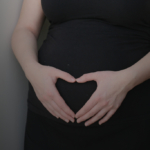It is estimated that up to 95% of women experience some type of sleep disturbance during pregnancy. While for many women the insomnia is relatively benign and may respond to simple interventions, other women experience more severe insomnia which has a significant impact on their quality of life and ability to function. Various non-benzodiazepine hypnotic agents, specifically zalepion (Sonata), eszopiclone (Lunesta), and zolpidem (Ambien), are commonly used for the short-term treatment of insomnia; however, information regarding the reproductive safety of these sleep aids has been sparse.
Several studies have addressed the use of zolpidem during pregnancy. The largest study included a total of 2,497 mothers who had taken zolpidem during pregnancy. While these studies suggest an increased risk of certain adverse outcomes (eg., low birth weight, preterm delivery) in women using zolpidem during pregnancy, there was no observed increase in risk of congenital malformations in the zolpidem-exposed children.
In another study of benzodiazepines and sedative-hypnotic use during pregnancy, researchers used the Swedish Medical Birth Registry to identify 590 women reporting the use of zopiclone** (n = 514), zolpidem (n = 60), or zalepion (n = 16) during the first trimester of pregnancy. No increase in teratogenic risk was observed in women taking non-benzodiazepine hypnotics versus those who were not exposed to these medications.
A study published this June has also used the Swedish birth registry to determine the risk for congenital malformations among infants exposed to sedative-hypnotics during the first trimester of pregnancy. Information regarding drug exposure is collected by the midwife early in pregnancy; thus, pregnancy exposure data is gathered prospectively, before pregnancy outcomes are known, which minimizes the risk for recall bias.
Women using non-benzodiazepine hypnotics during the first trimester of pregnancy and giving birth from July 1, 1995, to December 31, 2007 were identified. During the study period, 1318 women gave birth to 1341 infants. The most commonly reported hypnotic used was zopiclone (692 infants exposed), followed by zolpidem (n=603) and zalepion (n=32). 25 infants were exposed to more than one hypnotic. The reference group consisted of 1,106,001 women who gave birth to 1,125,734 infants during the same study period.
Non-benzodiazepine hypnotics were not associated with an increased risk of congenital malformations. The background rate of congenital malformations in the reference group giving birth during the study period was 4.7%. Among the infants born by mothers reporting use of hypnotics, the rate of malformation was 4.3% (58/1341). A statistically significant higher risk for certain intestinal malformations was observed in exposed infants; however, this finding was based on only 4 infants and may, according to the authors, be due to chance.
Mothers using sedative-hypnotics differed significantly from women in the reference group. They were older and had higher parity, more miscarriages, and more years of involuntary childlessness. They were also more likely to smoke and to use other medications, including psychotropic drugs. In their analysis, the authors attempted to control for some of these potentially confounding factors (specifically maternal age, smoking, parity, and body mass index). Comparing infants exposed to hypnotics to infants in the reference group, the adjusted odds ratio for having any malformation was 0.89.
This study is one of largest to date investigating the risk of congenital malformations in infants exposed to sedative-hypnotic agents during pregnancy. This study, as well as other smaller studies, suggests that maternal use of non-benzodiazepine hypnotic agents does not appear to carry a teratogenic risk. While these data are reassuring, this study has some limitations. Most important, information on the dose of drug and the duration of treatment was not included; some women may have used the drug only briefly or intermittently, while others may have used the drug for an extended period of time. Another limitation is that this study included a relatively small number of mothers taking zalepion (n=32).
While many women experience sleep disturbance during pregnancy, not all women require pharmacologic intervention. Improving sleep hygiene and cognitive-behavioral interventions may be helpful in many cases, but some women may require pharmacologic treatment. In addition, all women who present with insomnia should be screened for underlying mood or anxiety disorders. Non-benzodiazepine hypnotics may be an option for treating insomnia during pregnancy; however, women with comorbid anxiety or depression may benefit more from treatment with a benzodiazepine or an antidepressant.
Ruta Nonacs, MD PhD
Wang LH, Lin HC, Lin CC , Chen YH & Lin HC. Increased Risk of Adverse Pregnancy Outcomes in Women Receiving Zolpidem During Pregnancy. Clin Pharm Ther 2010; 88: 369-374.
Wikner BN, Stiller CO, Bergman U, et al. Use of benzodiazepines and benzodiazepine receptor agonists during pregnancy: neonatal outcome and congenital malformations. Pharmacoepidemiol Drug Saf. 2007; 16:1203-1210.
Wikner BN, Kallen B. Are Hypnotic Benzodiazepine Receptor Agonists Teratogenic in Humans? J Clin Psychopharmacol. 2011; 31(3):356-9.
**Zopiclone is not available in the United States, although its active stereoisomer, eszopiclone, is sold under the name Lunesta.








Thanks so much for your continuing in-depth and rigorous analysis of maternal (mental) health. Pregnant women continue to struggle with whatever was going on in their lives before their pregnancy, whether it be anxiety, depression, insomnia, coping with past sexual abuse, etc… The psychosocial adaptation to motherhood and the physical changes can sometimes strain their adaptive coping mechanisms. Reducing sadness, anxiety, & frustration in moms helps babies & families.
This kind of research is extremely important. Many women that take medication are unsure if they should continue once they become pregnant. It’s important to keep the health and well being of the baby and the mother in mind throughout the pregnancy.
Thank you for posting this! It’s difficult to get any real data for pregnant women and this gave the facts, allowing readers to evaluate true information rather than discussion board postings.
Thank you for bringing this subject into my attention (and the attention of many other women alike). This is very important, especially considering the limited information out there regarding sleeping meds. It’s so important to be at peace of mind during pregnancy, even if the meds won’t do any damage-worrying will. Better safe than sorry, and better not to worry when you can avoid it.